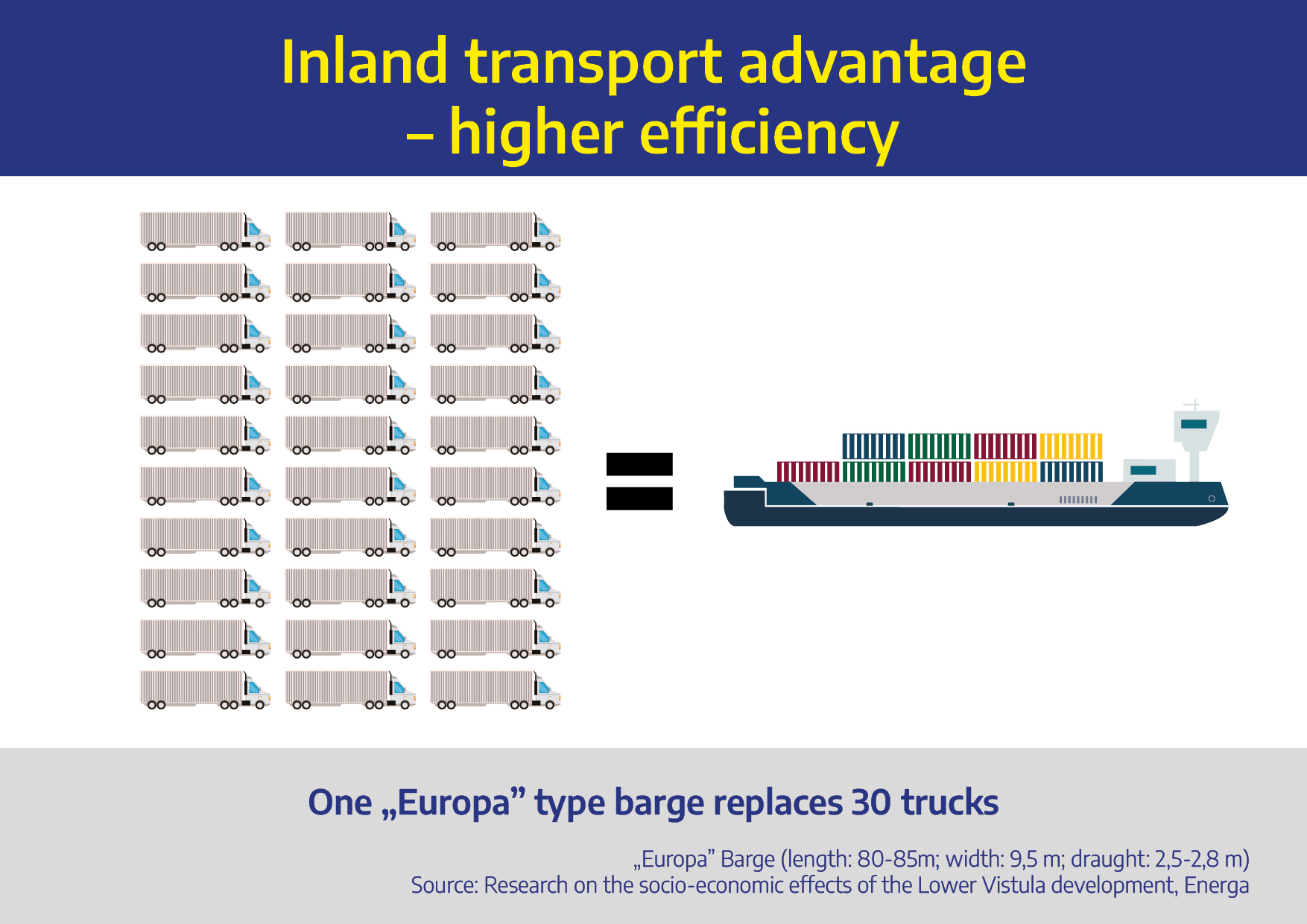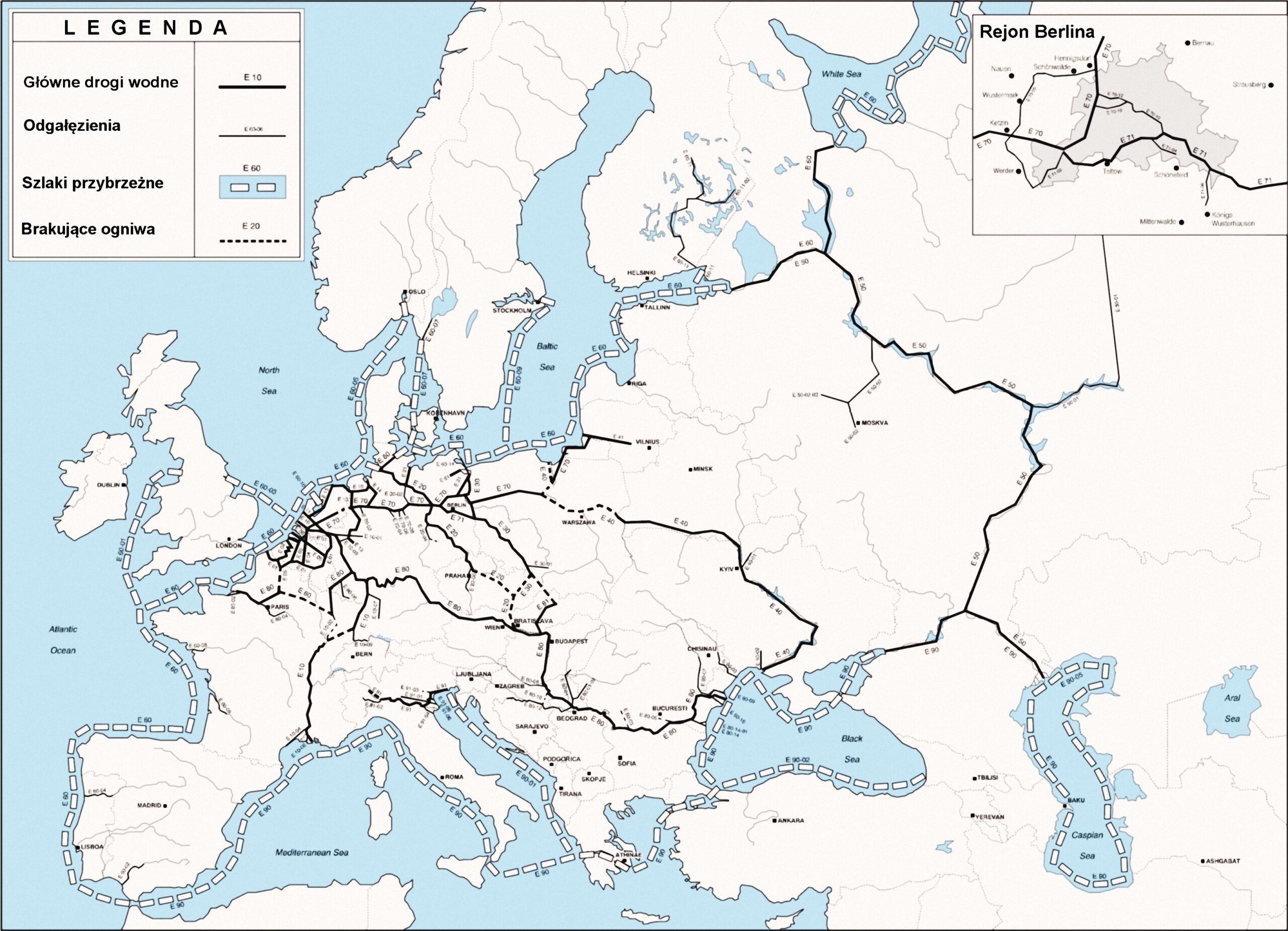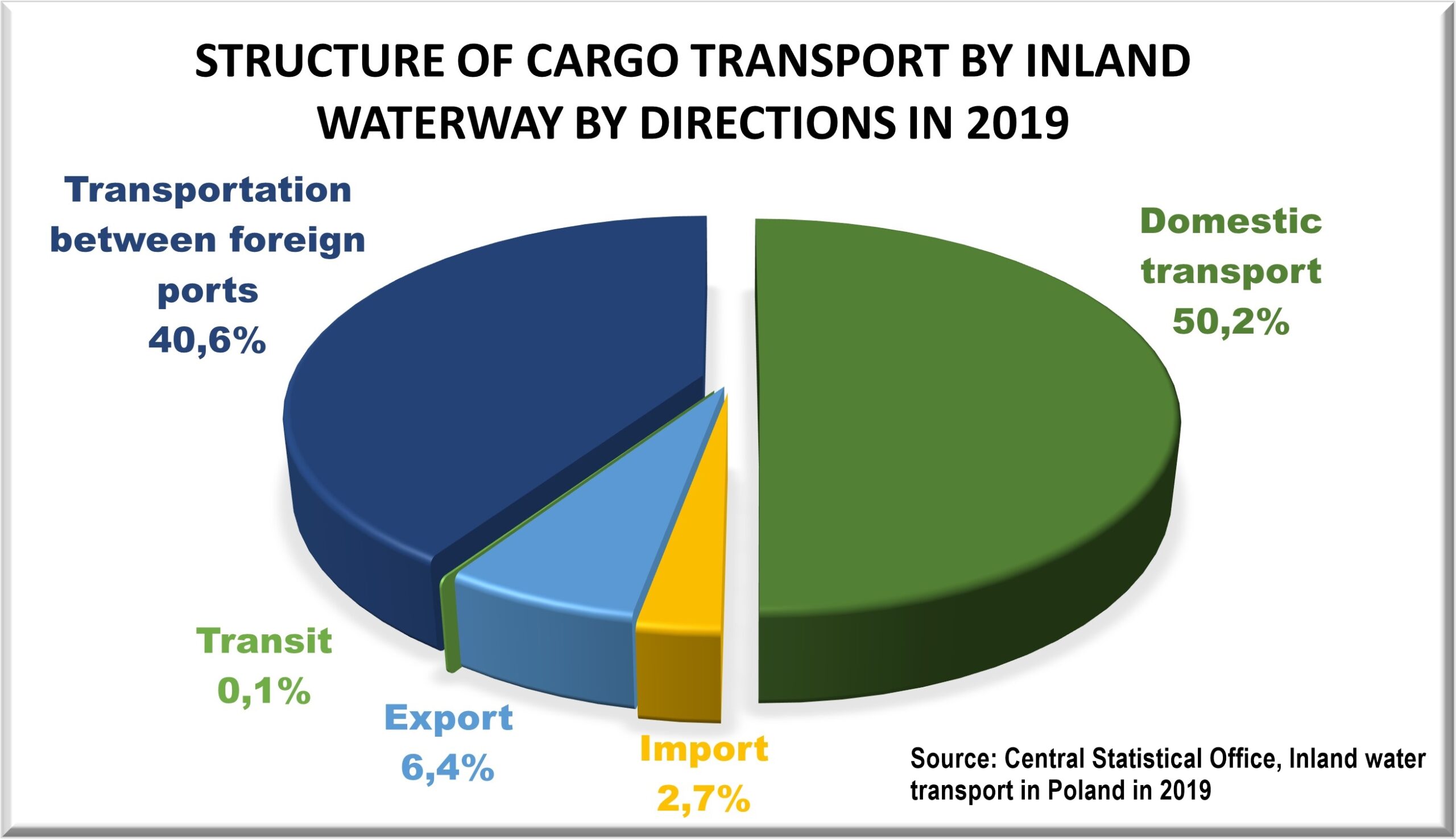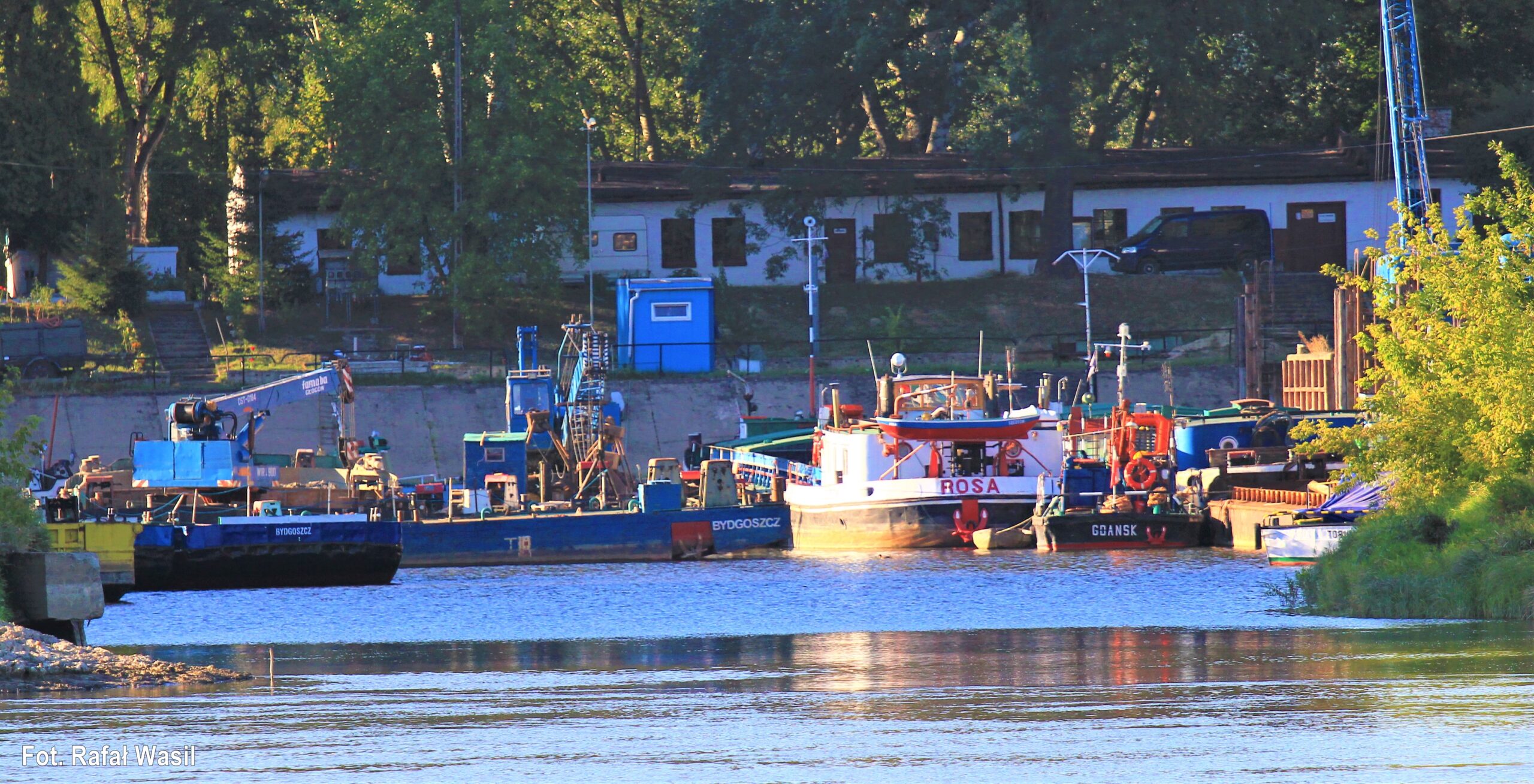
Until the mid-19th century, rivers were the most important natural transport routes which is why towns were mainly founded along them – as centres of economic, social, political, and cultural development.

The Treaty establishing the European Economic Community of 1957 already announced the introduction of a common transport policy as one of the three most important policies for the Community – including inland waterway transport. However, we had to wait around 30 years for the actual introduction of this policy.

The length of the inland waterways network in Poland equals 3,722 km, 3,513 km of which are used by shipping and only 5.5% of Polish waterways (206 km) meet the requirements for international roads (classes IV and V).

The Polish section of the IWW encompasses six voivodeships: Zachodniopomorskie, Lubuskie, Wielkopolskie, Kujawsko-Pomorskie, and Warmińsko-Mazurskie, totalling up to almost 41% of Poland’s territory, inhabited by 31% of all the citizens.
